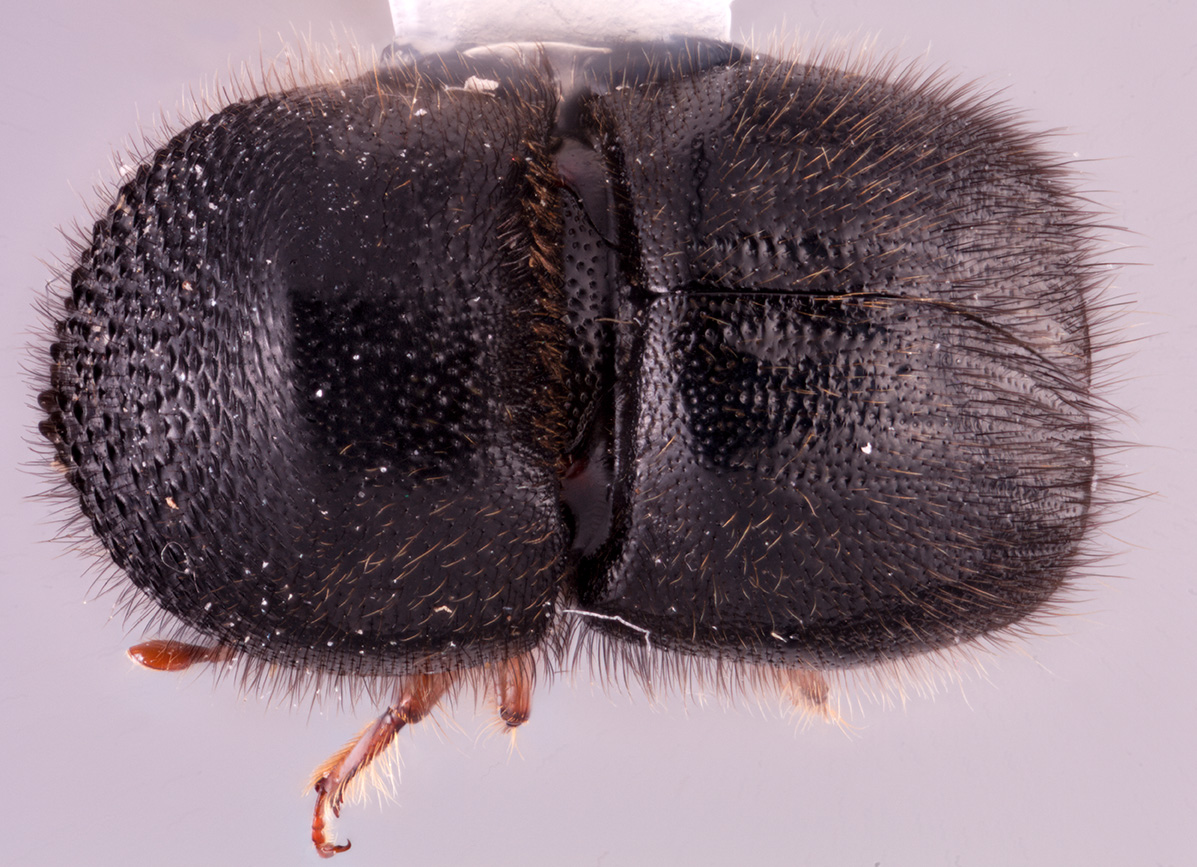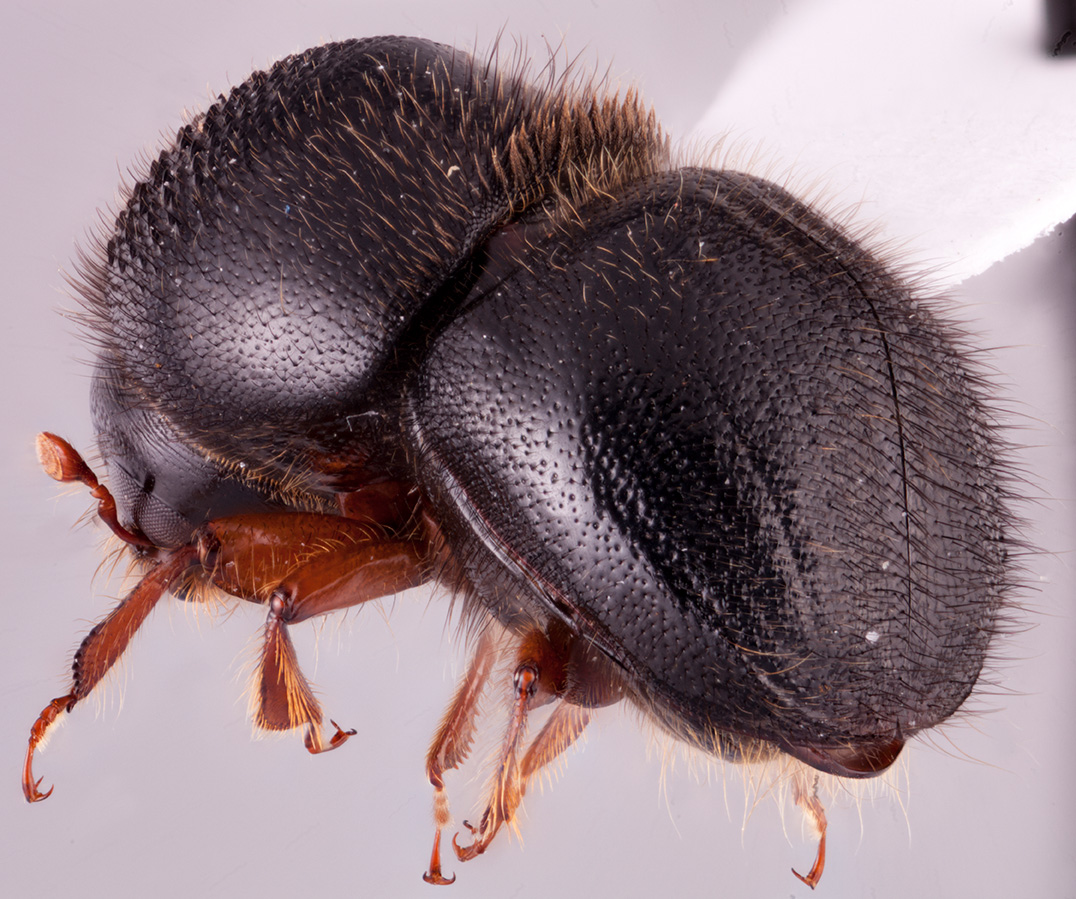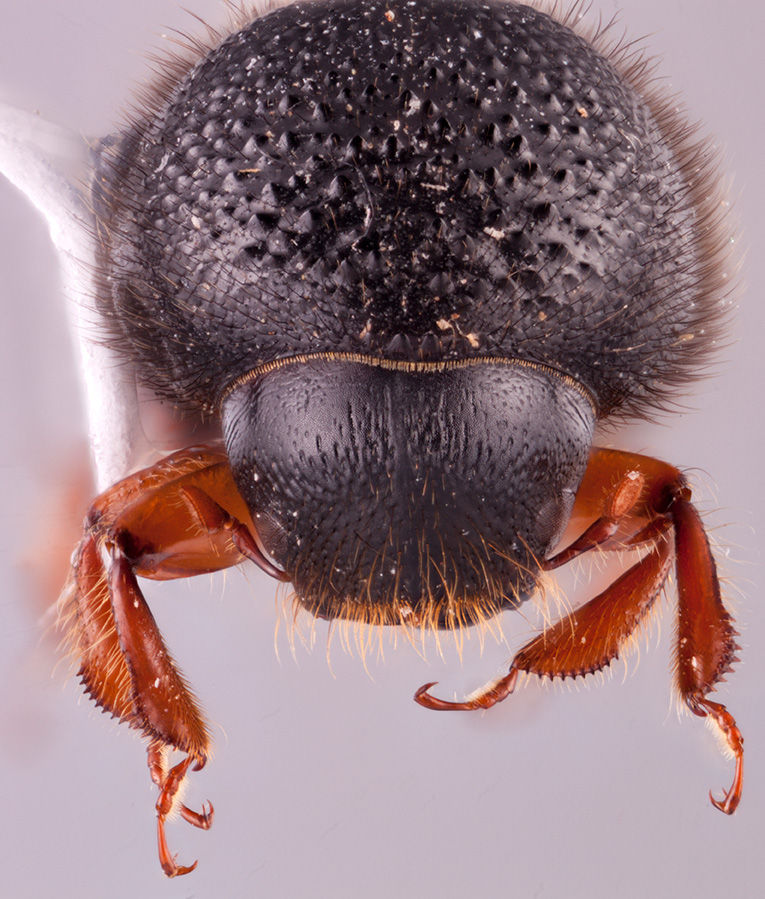Hadrodemius
|
Hadrodemius comans; R.K. Osborn |
|
Hadrodemius comans; R.K. Osborn |
|
Hadrodemius comans; R.K. Osborn |
|
Hadrodemius comans; R.K. Osborn |
Taxonomy
Hadrodemius Wood, 1980: 94
Diagnosis
Hadrodemius are distinguished by their large size, 4.90–7.20 mm long; stout (less than twice as long as wide) and hairy appearance; pronotalpronotal:
pertaining to the pronotum
basebase:
point or edge closest to the body; opposite of apex and scutellar area ornamented with a dense tuft of hairs associated with mesonotal mycangium; scutellumscutellum:
and scutellar area ornamented with a dense tuft of hairs associated with mesonotal mycangium; scutellumscutellum:
a shield-like sclerotized plate located at the midpoint of the elytral base
visible only on the anterioranterior:
the front or forward; opposite of posterior declivital slope of elytralelytral:
declivital slope of elytralelytral:
pertaining to the elytra
bases; procoxae contiguous; and the pronotalpronotal:
pertaining to the pronotum
laterallateral:
pertaining to the side
 margins rounded, not carinate.
margins rounded, not carinate.
May be confused with
Hadrodemius is closely related to Anisandrus, Cnestus, and Xylosandrus, all of which possess a mesonotal mycangium and the associated dense tuft of hairs at the scutellar area and pronotalpronotal:
pertaining to the pronotum
basebase:
point or edge closest to the body; opposite of apex (Gohli et al. 2017Gohli et al. 2017:
(Gohli et al. 2017Gohli et al. 2017:
Gohli J, Kirkendall LR, Smith SM, Cognato AI, Hulcr J, Jordal BH. 2017. Biological factors contributing to bark and ambrosia beetle species diversification. Evolution 71: 1258-1272. https://doi.org/10.1111/evo.13219, Johnson et al. 2018Johnson et al. 2018:
Johnson AJ, McKenna DD, Jordal BH, Cognato AI, Smith SM, Lemmon AR, Moriarty Lemmon EL, Hulcr J. 2018. Phylogenomics clarifies repeated evolutionary origins of inbreeding and fungus farming in bark beetles (Curculionidae, Scolytinae). Molecular Phylogenetics and Evolution 127: 229-238. https://doi.org/10.1016/j.ympev.2018.05.028). These three genera can be distinguished from Hadrodemius by their normal scutellumscutellum:
a shield-like sclerotized plate located at the midpoint of the elytral base
that is flush with the dorsaldorsal:
of or relating to the upper surface; opposite of ventral
 surface of the elytraelytron:
surface of the elytraelytron:
the two sclerotized forewings of beetles that protect and cover the flight wings
rather than just visible only on the anterioranterior:
the front or forward; opposite of posterior declivital slope of the elytralelytral:
declivital slope of the elytralelytral:
pertaining to the elytra
bases.
Distribution
Hadrodemius occurs in tropical areas from India in the West, through the Oriental region to New Guinea, and the Solomon Islands in the East.
Gallery system
Usually constructed in small stems from 1.5–5.0 cm diameter, it comprises a circumferential entrance gallery leading to one to several longitudinal galleries (Beaver 2010Beaver 2010:
Beaver RA. 2010. A review of the genus Hadrodemius Wood, with new synonymy and a key to species (Coleoptera: Curculionidae: Scolytinae). Zootaxa 2444: 51-57. https://doi.org/10.11646/zootaxa.2444.1.3).
Remarks
Further details of the biology are given by Browne 1961bBrowne 1961b:
Browne FG. 1961b. The biology of Malayan Scolytidae and Platypodidae. Malayan Forest Records 22: 1-255., Kalshoven 1959bKalshoven 1959b:
Kalshoven LGE. 1959b. Studies on the biology of Indonesian Scolytoidea 4. Data on the habits of Scolytidae. Second part. Tijdschrift voor Entomologie 102: 135-173 + pls. 15-22., and Beaver 2010Beaver 2010:
Beaver RA. 2010. A review of the genus Hadrodemius Wood, with new synonymy and a key to species (Coleoptera: Curculionidae: Scolytinae). Zootaxa 2444: 51-57. https://doi.org/10.11646/zootaxa.2444.1.3.





